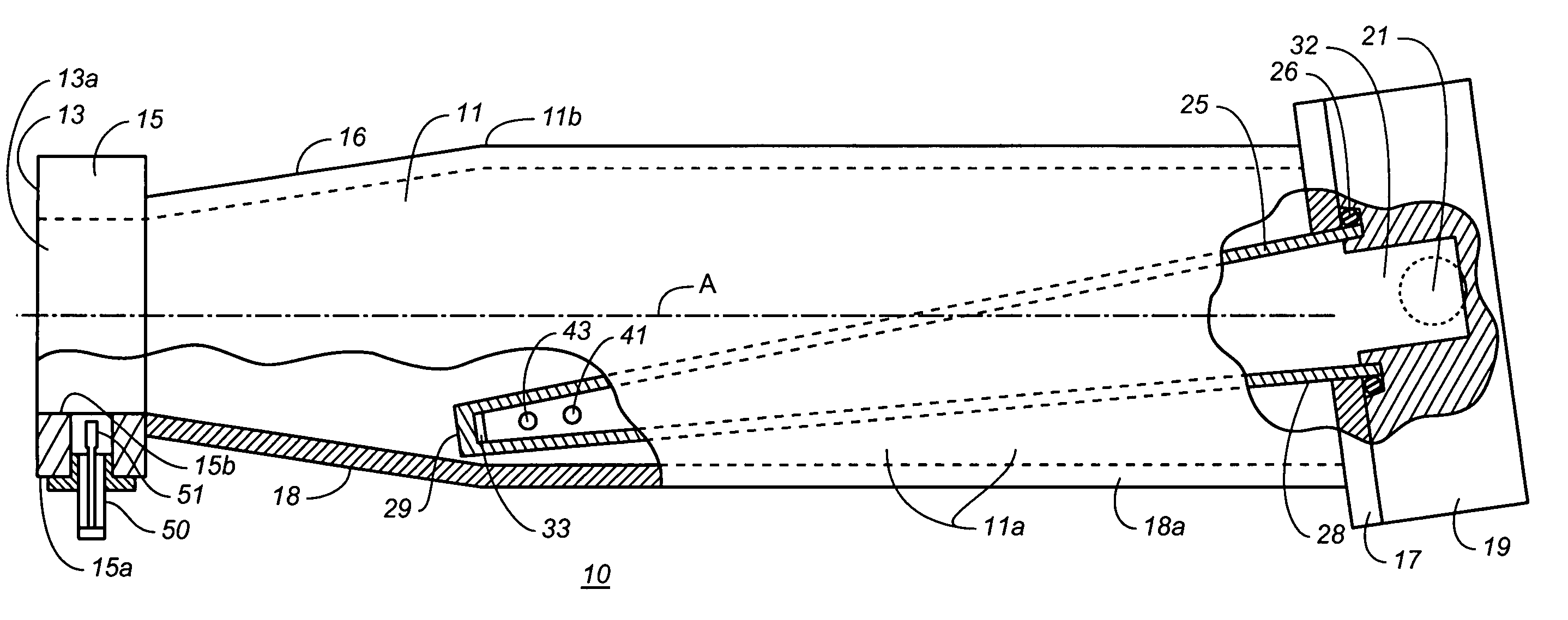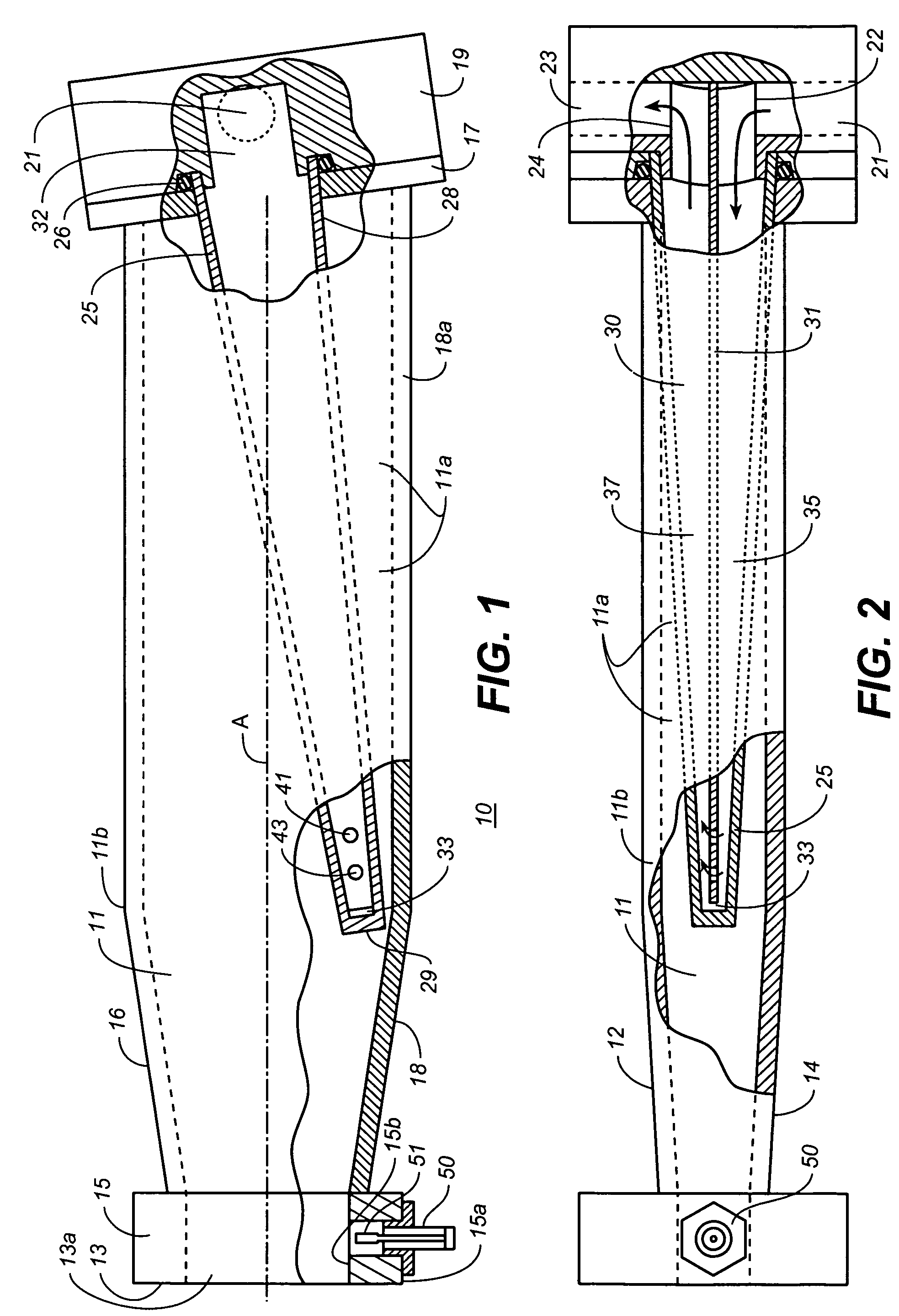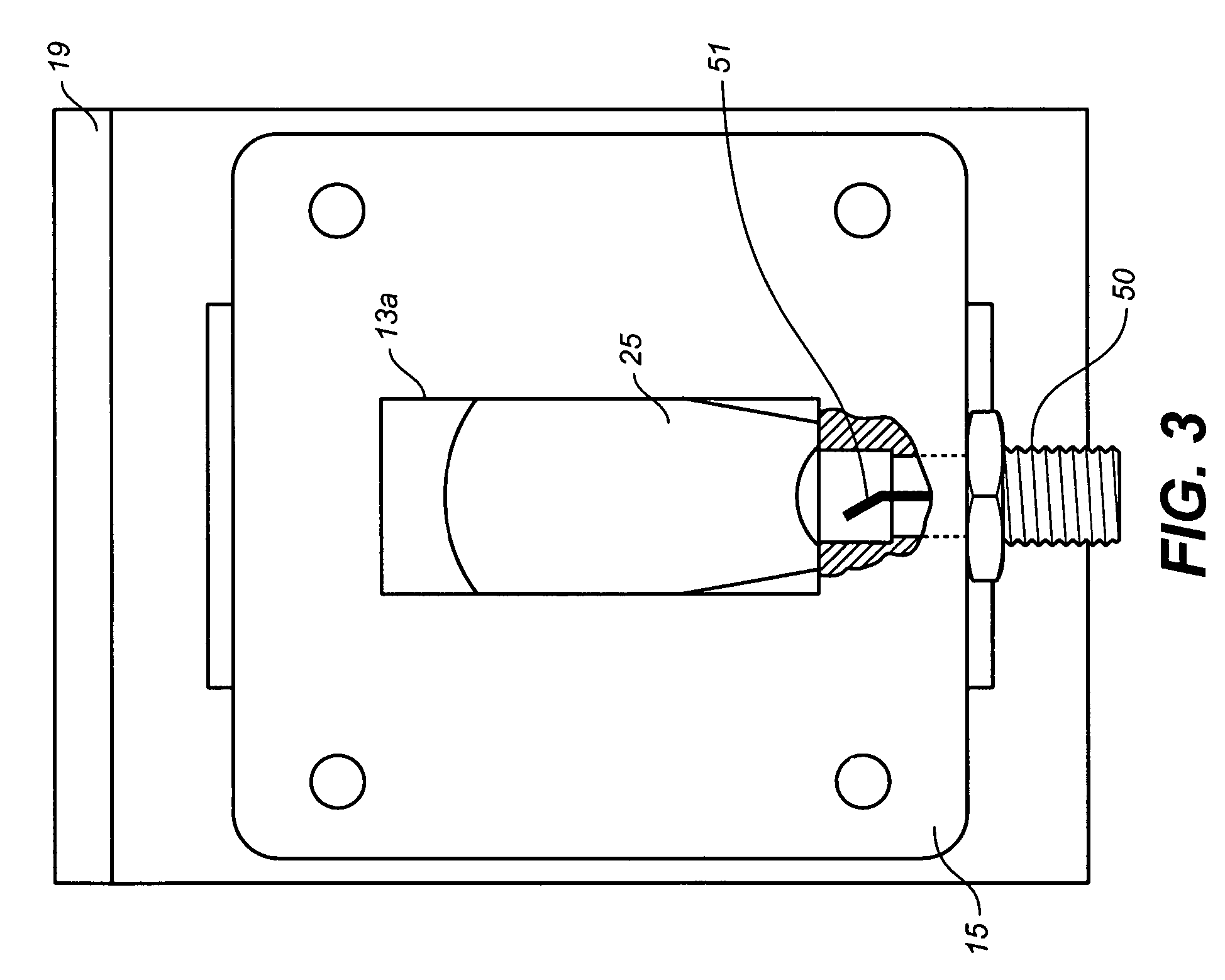High power absorbing waveguide termination for a microwave transmission line
a technology of high-power absorbing waveguides and transmission lines, which is applied in the direction of electric devices, instruments, base element modifications, etc., can solve the problems of failure of the pressure capability of the jacket, the water load of high-power waveguides designed for one frequency may not be suitable for higher frequency applications, and the heating of considerable amounts, etc., to achieve high peak and average power absorbing, easy to construct and assembl
- Summary
- Abstract
- Description
- Claims
- Application Information
AI Technical Summary
Benefits of technology
Problems solved by technology
Method used
Image
Examples
Embodiment Construction
[0026]Referring now to the drawings, FIGS. 1-3 show a power absorbing waveguide termination, generally denoted by the number 10, comprised of a tapered transforming section of rectangular waveguide 11, an oversize waveguide section 11a having back end 17, and a power receiving end 13 having an waveguide input port 13a sized in correspondence with the terminated transmission line waveguide. The waveguide termination 10 attaches to the transmission line to be terminated at its power receiving end by means of a waveguide flange 15. (The illustrated flange 15 is a relatively thick flange for a power monitoring probe as hereinafter described.) The tapered waveguide section, which is disposed between the oversize waveguide section and power receiving end 13, acts to match the input port 13a to oversize waveguide section 11a so that microwave power received by the termination's power is conducted to the oversize waveguide section with minimal power reflection. Because of its increased size...
PUM
 Login to View More
Login to View More Abstract
Description
Claims
Application Information
 Login to View More
Login to View More - R&D
- Intellectual Property
- Life Sciences
- Materials
- Tech Scout
- Unparalleled Data Quality
- Higher Quality Content
- 60% Fewer Hallucinations
Browse by: Latest US Patents, China's latest patents, Technical Efficacy Thesaurus, Application Domain, Technology Topic, Popular Technical Reports.
© 2025 PatSnap. All rights reserved.Legal|Privacy policy|Modern Slavery Act Transparency Statement|Sitemap|About US| Contact US: help@patsnap.com



